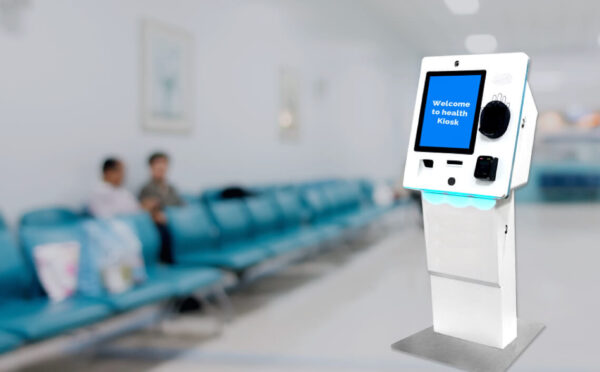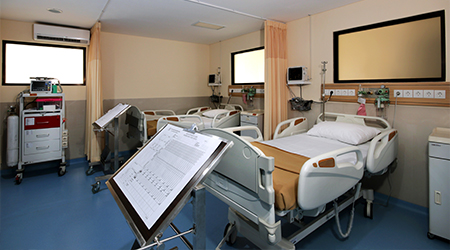Health
How to Choose the Best Retirement Community

Making the choice to move to a retirement community is a big decision that you will likely have given a lot of thought and consideration to.
Taking the leap from your existing home into a communal living environment can be a great way to boost your independence and to enjoy greater freedom in your senior years.
The retirement communities of today have many great advantages and can simplify many aspects of your life.
When you have decided to make the move to a senior living community, you will, of course, want to find the very best one for your individual needs. This will help to ensure that you enjoy your time in your new home.
Decide What You Need
The very first step before you make any serious decisions is to identify what it is you need from your new home.
If you have specific care requirements, then you will need to look for places that offer this level of assistance. Make sure to do your research thoroughly to know what kind of care will be included. You should also establish what the cost of this is going to be.
It can be wise to choose an assisted living facility that offers extensive levels of care so that you have this option if you do need extra help at this stage in your life.
Frontier Management is a country-wide company striving to bring the very best retirement experience to seniors across the US. Frontier Senior Living options encompass more than 120 residential communities, with thousands of happy residents.
When you are deciding what kind of home you are going to need, it is also worth thinking about whether you want to rent or buy your retirement property. Both of these options come with their own pros and cons, so be sure to think about what is right for you.
Consider Your Budget
Once you know what it is you need from your new home, you can figure out exactly what your budget is.
If you are going to rent a property in a retirement community, then you will need to know how much money you will be able to pay each month.
If you are going to buy your property, then you will have to determine how much you are either able to pay or how much you will be eligible to get a mortgage for. You may have assets that you plan to sell later in life, so be sure to take all potential income streams into consideration.
When you are considering your budget, it is also going to be necessary to take added costs into account.
Added costs may include:
- Ongoing care
- Medical treatments / medications
- Bills (check if these are included)
- Groceries
- Leisure activities
- Travel
Once you have figured out all your possible outgoings and added up these numbers, then you will have a good sense of what your budget is. When you are armed with this information, you will be much better equipped to start searching for your new home.
Get Online
The internet is a fantastic way to research retirement communities near you. This is something you can get help with from a friend or family member if you are not completely confident online.
Researching your options based on your budget and your needs will enable you to come up with a list of possibilities.
Each possible retirement community will have its own website that you can explore to read more about each option. This is a great way to get a feel for a place and to learn more about the different facilities that are available.
By looking at the websites of different communities, you might find that your list becomes shorter. This is because you may exclude certain options that you are not completely happy with.
Ask Questions
The next step is to reach out to the retirement homes that are still on your list and to ask them any further questions that are on your mind.
Keep a record of the responses so that you can refer to it when the time comes to make your final decision.
There’s no such thing as too many questions when it comes to this all-important process. You should feel confident and comfortable to obtain all of the information that you feel you need.
It can be a good idea to ask a loved one for help with this process so that you can be sure you aren’t missing anything out. The person that you ask for help may have considered very important questions that haven’t yet crossed your mind. If you can ask more than one person for their advice, then that could be all the more helpful.
Go for a Visit
After you have spoken to all of your potential retirement communities to ask your questions, you should now think about scheduling visits to your favorites.
By this point, your list of options may be quite short. This is great as it means you have eliminated the homes that are not suitable for you and can focus more seriously on the best options.
There is no rush to go and visit the homes on your list, and it can be better to space these visits out instead of trying to do them close together. This gives you time to truly think about each place after you visit it and to contact them again with any follow-up questions or concerns.
If you feel as though you need to visit a place more than once, then you absolutely should. You must be completely satisfied that you are going to be happy and comfortable in the community that you choose.
While you are on each visit, speak to residents and staff if it’s possible to do so. Try to get a feel for how other people are enjoying their time there and try to imagine yourself living there. Take a look at all of the facilities and the communal areas in which you will be spending the majority of your time. And, of course, make sure you get to see the homes themselves so that you can see if they are to your liking.
The Final Decision
It is great if you have people to help you with your final decision, but this choice should inevitably always rest with you.
You will hopefully find that you are drawn to one place more than the rest after you have conducted your visits. Trust your instincts but be practical with your decision-making.
This could be your home for many years ahead, so it is important that you are excited about your decision and eager to move there!
Education
SGOT Full Form – What is the SGOT Full Form?

SGOT full form : सेरम ग्लुटामेट ओक्सालोएस्ट्रांस्फेरेज”। यह एक प्रकार का एंजाइम है जो मुख्य रूप से लीवर और हृदय में पाया जाता है। यह टेस्ट शरीर के इस एंजाइम के स्तर को मापकर, व्यक्ति के लीवर और हृदय की स्वस्थता की जाँच करने के लिए किया जाता है।
डॉक्टर एक व्यक्ति को SGOT टेस्ट करवाने के लिए कह सकते हैं ताकि उन्हें इस एंजाइम के स्तर में किसी बदलाव की जानकारी हो सके, जो विभिन्न लीवर और हृदय रोगों के संकेतों को पहचानने में मदद कर सकता है।
इस लेख के माध्यम से हमने SGOT का पूरा नाम और इस टेस्ट के महत्वपूर्णता के बारे में जानकारी प्रदान की है, ताकि लोग इसे समझ सकें और अपने स्वास्थ्य की देखभाल में सहारा ले सकें।

SGOT का पुरा नाम – SGOT full form
SGOT की full form Serum Glutamic Oxaloacetic Transaminase होती है।
S – Serum
G – Glutamic
O – Oxaloacetic
T – Transaminase
SGOT की Pronunciation
Serum – सिरम
Glutamic – ग्लूटामिक
Oxaloacetic – ऑक्सालोएसेटिक
Transaminase – ट्रांसएमिनेस
SGOT क्या होता है ?
SGOT का मतलब सिरम ग्लूटामिक ऑक्सालोएसेटिक ट्रांसएमिनेस होता है। यह एक प्रकार का एंजाइम होता है जो सामान्य रूप से ह्रदय कोशिकाओं और यकृत में मौजूद होता है। जब ह्रदय या liver क्षतिग्रस्त हो जाता है तो ब्लड में SGOT का flow हो जाता है।
Blood मे serum glutamic oxaloacetic transaminase का level दिल के दौरे या वायरल hepatitis की वजह से बढ़ जाता है या फिर SGOT का स्तर कुछ दवाओं के कारण भी बढ़ सकता है।
SGOT test क्या है ?
SGOT test एक blood test होता है जो liver profile का हिस्सा होता है। यह लीवर में मौजूद दो एंजाइमों में से एक एंजाइम को मापता है और वह एंजाइम SGOT अर्थात Serum Glutamic Oxaloacetic Transaminase होता है।
इस एंजाइम को AST भी कहा जाता है। AST का अर्थ होता है अस्पार्टेट एमिनोट्रांसफरेज़। SGOT यह मूल्यांकन करता है कि ब्लड में कितना यकृत एंजाइम है।
SGOT test क्यों किया जाता है ?
डॉक्टर SGOT test के द्वारा मुख्य रूप से लीवर की समस्याओं की जांच और आंकलन करते हैं। SGOT Full Form एंजाइम का निर्माण मुख्य रूप से लिवर में होता है। जब भी किसी कारण से लीवर खराब हो जाता है या बीमार हो जाता है तो एसजीओटी लीवर से रक्त प्रवाह में leak हो सकता है। यदि ऐसा होता है तो रक्त में level सामान्य से ज्यादा हो जाएगा।
अगर किसी व्यक्ति को गुर्दे या दिल की बीमारी है तो उस व्यक्ति में SGOT का लेवल विशेष रूप से अधिक हो सकता है। इस chance को कम करने के लिए डॉक्टर उसी समय लिवर एंजाइम की जांच करवाने के लिए कह सकते हैं।
यदि दोनों एंजाइम का लेवल अधिक है तो यह जिगर की समस्या का संकेत हो सकता है। SGOT का स्तर अधिक होने का मतलब इस बात का संकेत भी हो सकता है कि शरीर के किसी अन्य प्रणाली या अंग में समस्या हो।
स्वस्थ SGOT test की range कितनी होती है ?
डॉक्टर निम्न range को सामान्य स्वस्थ SGOT रेंज के रूप में स्वीकार करते हैं :-
पुरुष : – 10 से 40 unit प्रति लीटर
महिलाएं :- 9 से 32 यूनिट प्रति लीटर
SGOT test की आवश्यकता क्यों है ?
ब्लड में इस एंजाइम के level की जांच करने के लिए यह test किया जाता है। इस जांच के द्वारा डॉक्टर को ह्रदय, यकृत, गुर्दे, मांसपेशी आदि की क्षति का निदान करने में मदद मिलती है। आमतौर पर तब यह टेस्ट किया जाता है, जब किसी व्यक्ति में जिगर की क्षति के symptoms होते हैं और यह symptoms निम्न है :-
- सुजा हुआ पेट
- पीली त्वचा और आंखें
- गहरे रंग का मूत्र
- भूख में कमी
- पैरों और टखनों में सूजन
- हल्के रंग का पूप
इसके अलावा डॉक्टर के द्वारा SGOT test तब भी सुझाया जाता है, जब :-
- व्यक्ति को हेपेटाइटिस वायरस का संक्रमण हो।
- यदि कोई ऐसी दवा ले रहे हो जो लीवर पर नकारात्मक प्रभाव डाल रही हो।
- बहुत अधिक शराब का सेवन करते हो।
- जिगर की बीमारियों का कोई पारिवारिक इतिहास हो।
- मोटापा या मधुमेह हो।
- बरामदगी, अग्नाशयशोथ या फिर मांसपेशियों में चोट आदि लगी हो तो ऐसे में डॉक्टर व्यक्ति को एसजीओटी टेस्ट करवाने के लिए कहते हैं।
SGOT test की तैयारी कैसे करे ?
SGOT Full Form टेस्ट एक सामान्य ब्लड टेस्ट है जो तकनीकी रूप से बिना किसी विशेष तैयारी के किया जा सकता है। हालांकि, कुछ कदम हैं जो आप इस टेस्ट को सरल बनाने के लिए उठा सकते हैं, जैसे कि टेस्ट से दो दिन पहले टाइलेनॉल और अन्य कोउंटर दवाओं से बचें।
यदि किसी कारण से ओवर-द-काउंटर दवा की आवश्यकता होती है, तो आपको टेस्ट से पहले डॉक्टर को सूचित करना चाहिए। टेस्ट से पहले, आपको डॉक्टर को उन सभी दवाओं के बारे में सूचित करना अत्यंत महत्वपूर्ण है जो आप ले रहे हैं।
टेस्ट से एक रात पहले, अच्छी तरह से पानी पीना सुनिश्चित करें ताकि आप हाइड्रेट रहें। यह सुनिश्चित करने में मदद करेगा कि आपके रक्त को खींचना आसान हो।
ध्यान रखें कि आपके पहने हुए कपड़े बहुत टाइट नहीं हों, क्योंकि रक्त का सैंपल आपके बाजू से लिया जाता है। इसलिए, आधी कोहनी तक के कपड़े पहनना अधिक सुरक्षित हो सकता है, जिससे टेक्नीशियन को रक्त प्राप्त करना आसान हो।
निष्कर्ष :-
मित्रों, इस लेख में हमने SGOT Full Form का पूरा नाम विस्तार से जानने का प्रयास किया है। urstoryiq.com हम आशा करते हैं कि यह लेख आपके लिए सहायक साबित होगा। यदि इस लेख से संबंधित कोई भी प्रश्न हो, तो कृपया हमें टिप्पणी के माध्यम से बताएं।
यदि आप किसी अन्य विषय पर जानकारी चाहते हैं, तो आप वह भी हमसे कमेंट करके साझा कर सकते हैं। अगर आपको जानकारी पसंद आई हो, तो कृपया इस लेख को अधिक से अधिक साझा करें।
FAQ’S :-
Q1. SGOT test मे sample type क्या रहता है ?
Ans. इसमें blood sample लिया जाता है।
Q2. SGOT test से पहले खाली पेट रहना आवश्यक है ?
Ans. नही
Q3. SGOT test report क्या दर्शाती है ?
Ans. यह liver कोशिकाओं को नुकसान की मात्रा का संकेत देती है।
Q4. क्या SGOT 70 समान्य है ?
Ans. नही, समान्य SGOT 7 - 56 unit प्रति लीटर होता है।
Q5. SGOT के लिए blood sample कैसे लिया जाता है ?
Ans. हाथ की नस से Check Out : CR Full Form – What is CR Full Form
Health
ICU Full Form: Intensive Care Unit
Health
Why is it important to install health kiosks?

Installing health kiosks has become increasingly important in recent years because of the many advantages they provide to patients and healthcare providers alike. This health atm kiosk is important to expand access to healthcare, promote preventative care, and enable people to manage their health. In this post, we are going to tell you about health kiosks and their advantageous effects on the provision of healthcare.
- Enhance accessibility
Accessibility is improved for individuals by placing health kiosks in a variety of public locations, including pharmacies, shopping malls, workplaces, and hospitals. Health ATM eliminate location barriers and guarantees that people may quickly obtain basic healthcare services wherever they are by providing easily accessible points of care.
- Convenience and effectiveness
Health kiosks provide a quick and effective way to get medical care. They give people the freedom to monitor their vital signs, perform quick health evaluations, and get rapid feedback whenever it’s convenient for them. Because health kiosks are self-service, there is no need to make appointments, stand in line, or spend huge amounts of money.
- Early Detection and Preventive Care
For better health outcomes, early Detection and Preventive Care are essential. Individuals can regularly measure health indicators and monitor their vital signs thanks to the health atm kiosk. People can see potential health hazards or variations from normal limits by routinely evaluating variables like blood pressure, heart rate, weight, or BMI.
Early detection enables people to consult healthcare professionals, seek medical care, adjust their lifestyles as needed, or both. In this way, it encourages preventative care and lowers the risk of more significant health consequences.
- Empowers the patients toward their health
The use of health kiosks as a platform for health education and empowerment promotes both. They offer access to tools, videos, and interactive content on numerous health-related topics.
Health atm kiosks enable people to make informed decisions about their health, adopt healthier habits, and actively participate in maintaining their well-being through encouraging health literacy. This sharing of information encourages a sense of personal ownership and accountability for one’s health.
- Healthcare Delivery at a Reduced Cost
Setting up health kiosks can help with healthcare delivery at a reduced cost. Health kiosks relieve pressure on conventional healthcare institutions by offering self-service healthcare options, freeing up resources for more specialized care.
Additionally, health atm kiosks can aid in the early detection of health problems and reduce the chance of illness that leads to critical treatments for patients. Health kiosks are a valuable addition to healthcare systems because of how reasonably priced they are, especially when it comes to lowering overall healthcare costs and optimizing resources.
Conclusion
Setting up health kiosks is crucial for expanding access to healthcare, promoting preventative care, and enabling people to take an active role in maintaining their health. These self-service tools facilitate early identification and preventive interventions while improving accessibility, convenience, and time effectiveness.
Additionally, health kiosks help with patient-centered treatment, cost-effective healthcare delivery, and health education.
-
Technology6 years ago
Developing Workplace Face Recognition Devices and Controls
-

 Business News5 years ago
Business News5 years agoFacts to know about commercial closing
-
Home Advice6 years ago
Things to Remember When Shopping For Recycled Plastic Adirondack Chairs
-
Technology6 years ago
Use WhatsApp Web Login on PC
-
Entertainment6 years ago
Meanings of WhatsApp Symbols, Emoticons
-

 Education5 years ago
Education5 years agoHuman Body And Its Interesting Features
-
Entertainment6 years ago
Ganesh Chaturthi Songs (Mp3, DJ Songs, Remix) Ganpati Songs Free Download
-

 Sports News4 years ago
Sports News4 years agoHow to Build a Perfect Fantasy Cricket Team?









